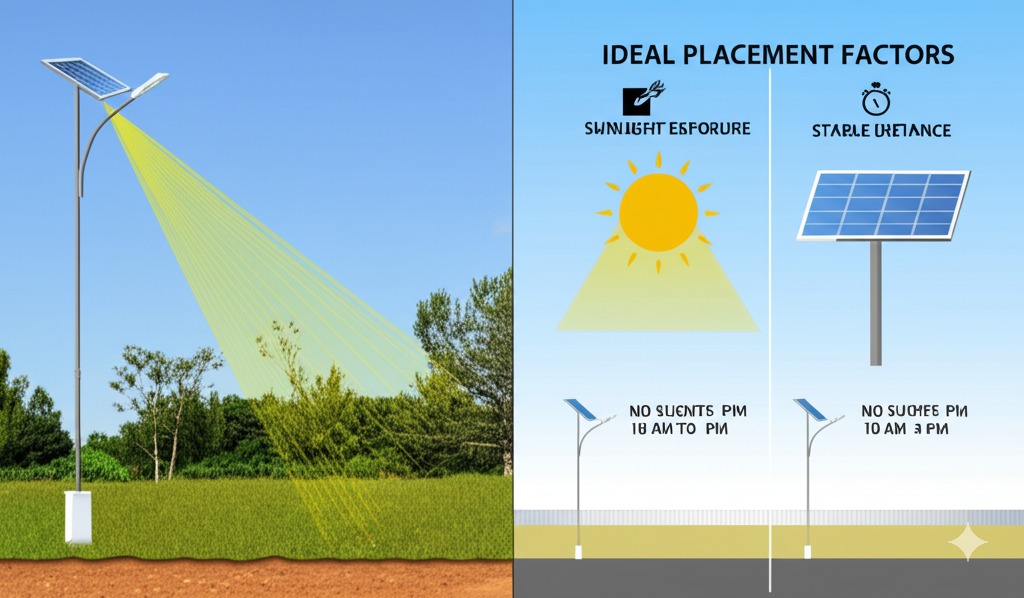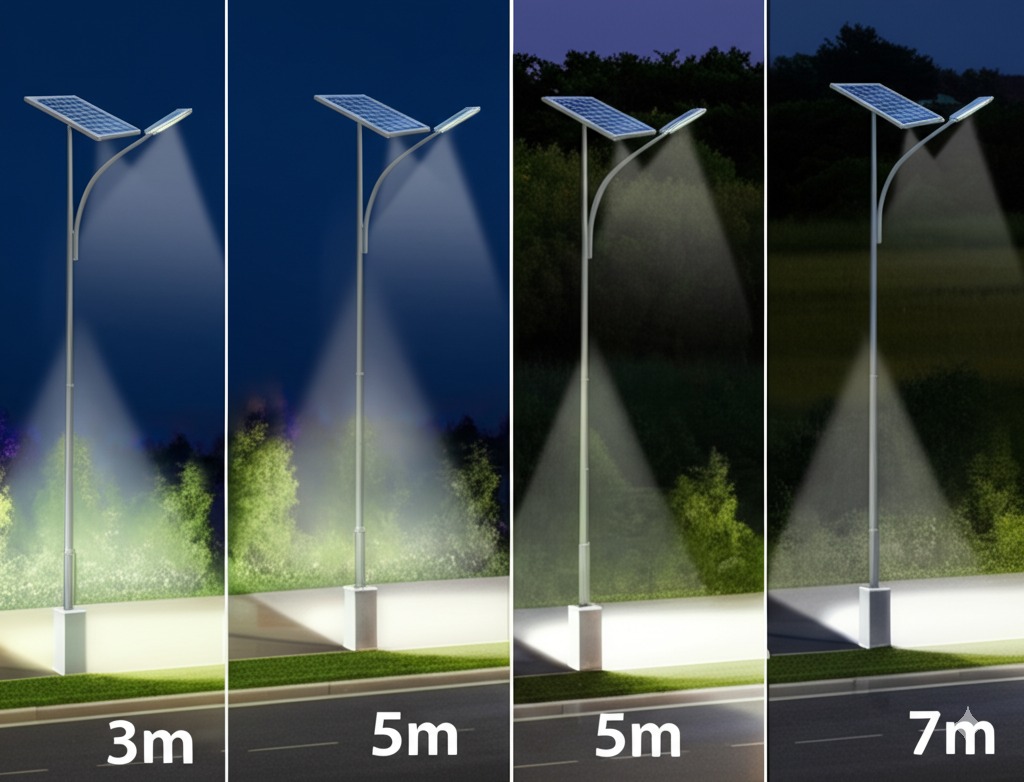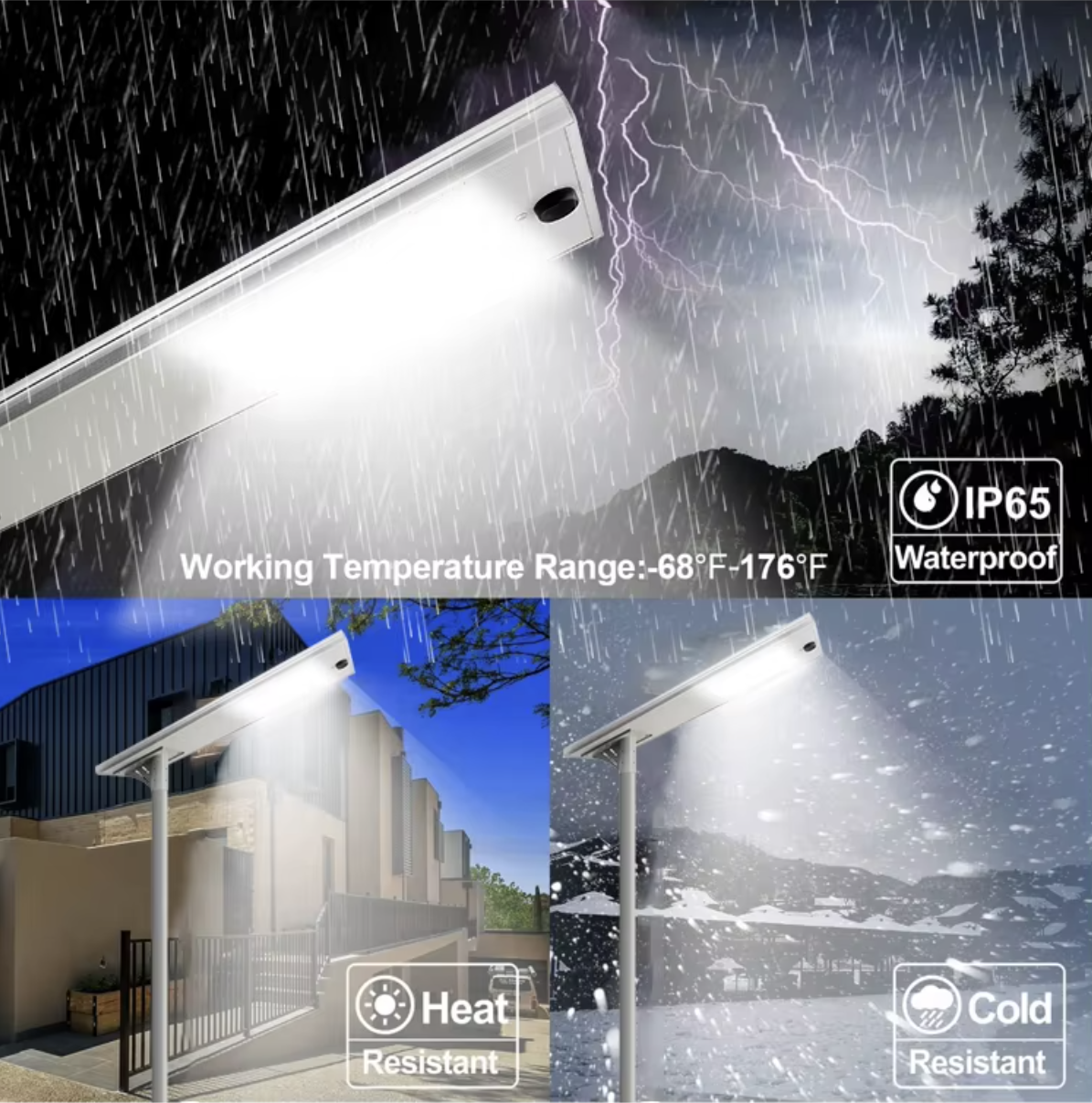Solar street lights offer flexible installation options since they don’t require grid connections. However, their performance heavily depends on location, affecting efficiency and longevity.
The best places to install solar street lights are areas with maximum sunlight exposure, minimal shading, and stable ground—typically along roads, pathways, parking lots, or garden perimeters. Avoid locations near tall trees, buildings, or other structures that may cast shadows.

Choosing the right installation spot ensures consistent performance, especially in varying weather conditions. Let’s explore key factors that determine the best placement.
What Makes a Location Ideal for Solar Street Lights?
Not every outdoor space is equally suitable for solar lighting. The best locations balance sunlight access, visibility, and structural stability.
Key criteria: 6-8 hours of direct sunlight, minimal obstructions (no shade after 10 AM-4 PM), firm ground (concrete/soil), and safety from vandalism or accidental damage. Avoid placing lights under tree canopies or close to reflective surfaces.

Location Suitability Analysis
| Factor | Ideal Condition | Why It Matters |
|---|---|---|
| Sun Exposure | Direct sunlight 6-8 hrs/day | Ensures full battery charging |
| Shade-Free | No shadows between 10 AM-4 PM | Peak sunlight hours maximize efficiency |
| Mounting Surface | Stable, non-shifting ground | Prevents tilting or loosening over time |
| Safety | 3-5m height, away from heavy traffic | Reduces collision or vandalism risks |
| Moisture Resistance | Avoid excessive dampness | Protects electrical components from corrosion |
From our 14 years of supplying solar lights, we’ve seen proper solar panel angle adjustment increase efficiency by 15-20%. For best results, panels should face the equator (south in the Northern Hemisphere, north in the Southern Hemisphere) at a tilt matching the local latitude.
How Does Installation Height Impact Performance?
Installation height affects both light coverage and solar charging efficiency. Too low reduces illumination range, while too high may decrease maintenance accessibility.
Optimal height: 3-5 meters (10-16 feet) for residential paths, 6-8 meters (20-26 feet) for roads, ensuring wider light spread without compromising panel sunlight exposure. Mount poles must be sturdy to avoid swaying in wind.

Height vs. Performance Guide
| Location | Recommended Height | Light Coverage | Notes |
|---|---|---|---|
| Footpaths/Gardens | 3-4m | 5-8m radius | Avoid overhanging branches |
| Residential Streets | 5-6m | 10-15m radius | Ideal for neighborhood roads |
| Parking Lots | 4-5m (pole-top), 2-3m (wall-mounted) | Per-light coverage | Spacing: 4-6m apart |
| Highways/Roads | 6-8m | 15-20m radius | Requires high-lumen LEDs |
In Middle Eastern projects, we recommend adding 10-15° more tilt to panels to offset dust accumulation, maintaining efficiency in sandy environments.
What Are Common Installation Mistakes to Avoid?
Even high-quality solar street lights can underperform if installed incorrectly. Awareness of frequent errors helps optimize long-term reliability.
Top mistakes: placing under shade, incorrect panel angle, loose pole mounting, improper battery insulation, or installing near high-intensity light sources (causing false dusk detection).

Problem vs. Solution Reference
| Mistake | Consequence | Fix |
|---|---|---|
| Panel in shade after noon | 30-50% less charging | Trim foliage or relocate pole |
| Battery compartment exposed | Overheating/cold damage | Use insulated, ventilated boxes |
| Loose pole foundation | Light tilts, reducing efficiency | Cement base 1m deep for stability |
| Facing panel away from the sun | Poor energy generation | Adjust angle seasonally |
| Dirty panels | Gradual efficiency drop | Clean every 2-3 months |
For snowy regions, we design systems with battery heaters and steeper panel angles (latitude +15°) to prevent snow buildup.
Conclusion
The best solar street light installation spots offer unobstructed sunlight, stable mounting, and safety from environmental hazards. Proper height, angle, and location planning ensure optimal performance for years with minimal maintenance.

